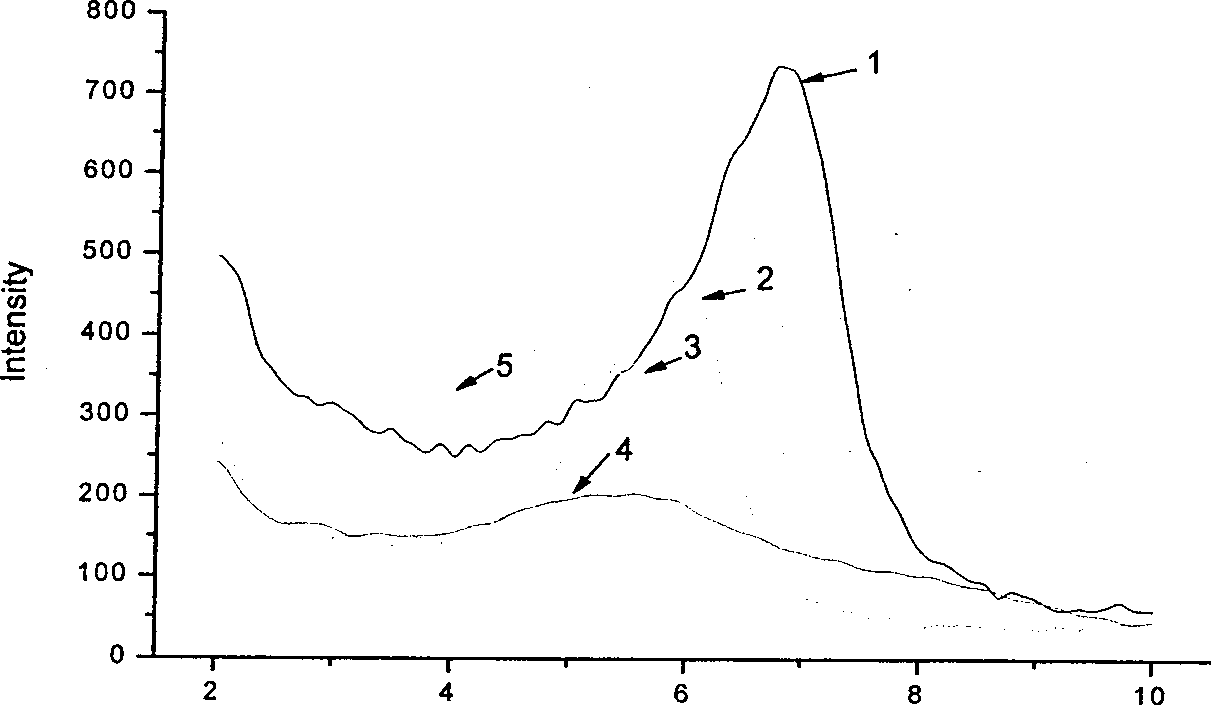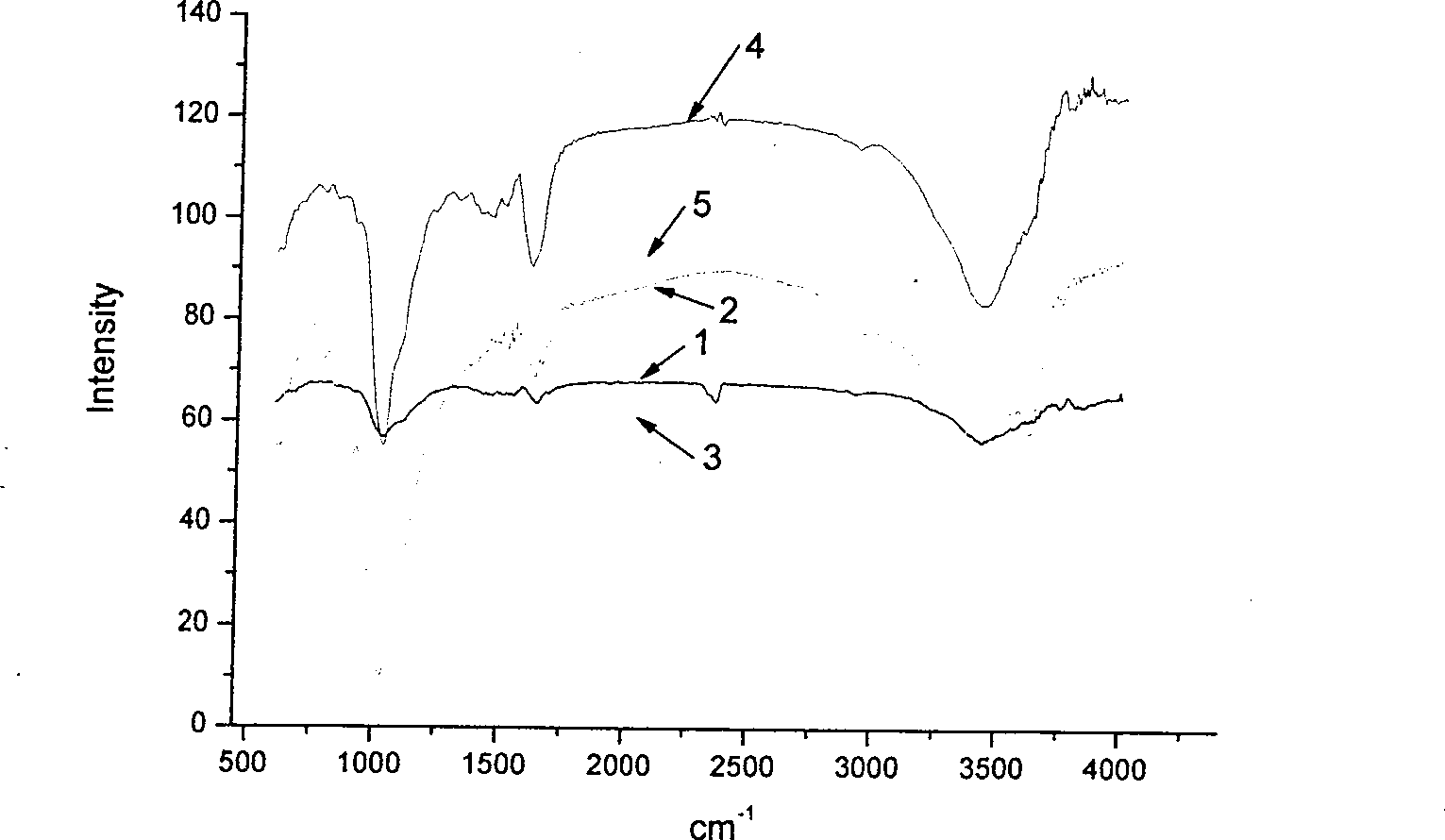The medical use anti-infection polymeric material and its preparation method
A polymer material, anti-infection technology, applied in the direction of catheter, can solve problems such as poor effect, environmental pollution, complex process, achieve good thermodynamic properties and physical and mechanical properties, avoid the use of harmful solvents, and good anti-infection effect. Effect
- Summary
- Abstract
- Description
- Claims
- Application Information
AI Technical Summary
Problems solved by technology
Method used
Image
Examples
Embodiment 1
[0075] 1. Preparation of Na-montmorillonite: Stir 20 g of raw montmorillonite in 500 mL NaCl saturated deionized aqueous solution to form a stable suspension; stir the suspension at 30°C for 5 hours, filter with suction, and then wash and filter with deionized water object 3 times. The precipitate was vacuum-dried at 60° C. to constant weight, and ball-milled to a particle size of 20-30 μm to obtain Na-montmorillonite.
[0076] 2. Preparation of organic montmorillonite: Stir 20 g of Na-montmorillonite in 400 mL of deionized water dispersion medium to form a stable suspension; then add 18 g of benzethonium chloride to the suspension; The reaction was stirred for 4 hours. Suction filtration, and then wash the filtrate several times with deionized water until the filtrate is free of Cl - Until detection (detection of Cl with silver nitrate aqueous solution -) . The precipitate was vacuum-dried at 60° C. to constant weight, and ball-milled to a particle size of 20-30 μm to obt...
Embodiment 2
[0081] 1. Preparation of Na-montmorillonite: same as in Example 1.
[0082] 2. Preparation of organic montmorillonite: add 5g Na-montmorillonite to 100ml deionized water, stir to form a stable suspension; add 1g dodecyltrimethylammonium bromide and 1g hexadecyltrimethylbromide Ammonium chloride was stirred at 85°C for 4 hours. Suction filtration, and then wash the filtrate several times with deionized water until the filtrate is free of Br - Until detection (detection of Br with silver nitrate aqueous solution - ). The precipitate was vacuum-dried at 60° C. to constant weight, and ball-milled to a particle size of 20-30 μm to obtain organic montmorillonite.
[0083] 3. Preparation of loaded econazole montmorillonite: Add 50ml of absolute ethanol to the modified organic montmorillonite obtained above, stir to form a stable suspension, add 2g of econazole, stir at room temperature for 4 hours, suction filter, and then The filtrate was washed 4 times with absolute ethanol. T...
Embodiment 3
[0086] 1. Preparation of Na-montmorillonite: same as in Example 1.
[0087] 2. Preparation of organic montmorillonite: Stir 30 g of Na-montmorillonite in 600 mL of deionized water dispersion medium to form a stable suspension; then mix 15 g of didecyldimethyl ammonium chloride and 15 g of cetyl tri Methylammonium chloride was added to the suspension; the mixture was stirred and reacted at 85°C for 4 hours. Suction filtration, and then wash the filtrate several times with deionized water until the filtrate is free of Cl - Until detected (detection of Cl with silver nitrate aqueous solution - ). The precipitate was vacuum-dried at 60° C. to constant weight, and ball-milled to a particle size of 20-30 μm to obtain organic montmorillonite.
[0088] 3. Prepare loaded gentamicin montmorillonite: add the organic montmorillonite prepared above into 300ml deionized water, stir to form a stable suspension, add 4 million units (about 40g) of gentamicin, and stir at room temperature fo...
PUM
| Property | Measurement | Unit |
|---|---|---|
| particle diameter | aaaaa | aaaaa |
| particle diameter | aaaaa | aaaaa |
| diameter | aaaaa | aaaaa |
Abstract
Description
Claims
Application Information
 Login to View More
Login to View More - R&D
- Intellectual Property
- Life Sciences
- Materials
- Tech Scout
- Unparalleled Data Quality
- Higher Quality Content
- 60% Fewer Hallucinations
Browse by: Latest US Patents, China's latest patents, Technical Efficacy Thesaurus, Application Domain, Technology Topic, Popular Technical Reports.
© 2025 PatSnap. All rights reserved.Legal|Privacy policy|Modern Slavery Act Transparency Statement|Sitemap|About US| Contact US: help@patsnap.com



